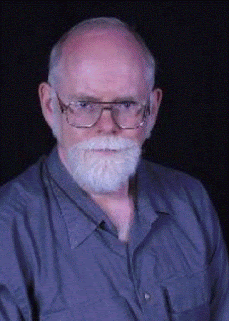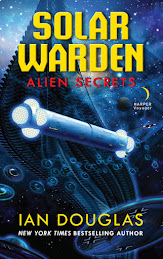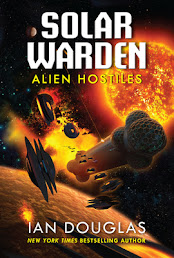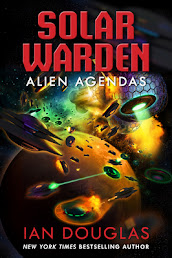Blog Listing
- @Number71
- Before We Go blog
- Best Fantasy Books HQ
- Book Reporter
- Bookworm Blues
- Charlotte's Library
- Civilian Reader
- CrimeReads
- Critical Mass
- Dark Wolf's Fantasy Reviews
- Everything is Nice
- FanFiAddict
- Fantasy & SciFi Lovin' News & Reviews
- Fantasy Cafe
- Fantasy Faction
- Fantasy Literature
- Gold Not Glittering
- GoodKindles
- Grimdark Magazine
- Hellnotes
- io9
- Jabberwock
- Jeff VanderMeer
- King of the Nerds
- Layers of Thought
- Lynn's Book Blog
- Neth Space
- Novel Notions
- Only The Best Science Fiction & Fantasy
- Pat's Fantasy Hotlist
- Pyr-O-Mania
- Reactor Mag
- Realms Of My Mind
- Rob's Blog O' Stuff
- Rockstarlit Bookasylum
- SciFiChick.com
- SFF Insiders
- Smorgasbord Fantasia
- Speculative Book Review
- Stainless Steel Droppings
- Tez Says
- The Antick Musings of G.B.H. Hornswoggler, Gent.
- The B&N Sci-Fi & Fantasy Blog
- The Bibliosanctum
- The Fantasy Hive
- The Fantasy Inn
- The Nocturnal Library
- The OF Blog
- The Qwillery
- The Reading Stray
- The Speculative Scotsman
- The Vinciolo Journal
- The Wertzone
- Thoughts Stained With Ink
- Val's Random Comments
- Voyager Books
- Walker of Worlds
- Whatever
- Whispers & Wonder
Blog Archive
-
▼
2023
(244)
-
▼
May
(29)
- Book review: Miranda by John R. Little
- GUEST POST: Celebrating 5 Years of Ordshaw by Phil...
- Interview: Kate Heartfield, author of The Embroide...
- The Fairy Bargains of Prospect Hill by Rowenna Mil...
- Review: The Blighted Stars by Megan E. O'Keefe
- A Cup of Tea at the Mouth of Hell by Luke Tarzian ...
- Graphic Novel: Karmen by Guillem March
- The Will Of The Many by James Islington (reviewed ...
- Interview: Rex Burke, author of the Odyssey Earth ...
- The Lost War by Justin Lee Anderson (Reviewed by L...
- SPFBO 9 Introduction Post - meet the Fantasy Book ...
- Review: Witch King by Martha Wells
- Book review: The Child's Thief by Brom
- Sons of Darkness by Gourav Mohanty (Reviewed by Sh...
- Book review: The Hellbound Heart by Clive Barker
- Review: The Surviving Sky by Kritika H. Rao (revie...
- The Return of the Knights by Gregory Kontaxis (Rev...
- Exclusive Cover Reveal + Q&A with D. P. Wooliscrof...
- Interview: Gama Ray Martinez, author of the Defend...
- Book review: The Reapers Are The Angels by Alden Bell
- Review: The Battle Drum by Saara El-Arifi
- Book review: March's End by Daniel Polansky
- Review: Scarlet by Genevieve Cogman
- Book Review: Titanium Noir by Nick Harkaway
- Review: Our Hideous Progeny by C. E. McGill
- By A Silver Thread by Rachel Aaron (reviewed by Mi...
- Book review: Paradise-1 by David Wellington
- Announcing Combat Codes: The Mystery of the Island...
- Interview: Ian Douglas, author of the Solar Warden...
-
▼
May
(29)
Interview: Ian Douglas, author of the Solar Warden series
Buy Alien Agendas here
AUTHOR INFO: Ian Douglas is one of the many pseudonyms for writer William H. Keith, New York Times bestselling author of the popular military science fiction series The Heritage Trilogy, The Legacy Trilogy, The Inheritance Trilogy, The Star Corpsman series, The Star Carrier series, and The Andromedan Dark series. A former Navy Hospital Corpsman, he lives in Pennsylvania.
OFFICIAL BOOK BLURB: The Saurians, a highly evolved reptilian species which escaped extinction 65 million years ago, have an agenda: to achieve behind-the-scenes dominance over Earth. Operating from hidden bases, they use psychosocial techniques to plant conspiracy theories and instill fear within the human population. Too weak in numbers to militarily conquer a world they believe to be their own, they seek to renew Nazi strongman ideologies and surrogates to gain absolute control.
Their first attempt is thwarted by the Talis, time-traveling humans from the far future. Yet, their assistance is limited as they face an all-out time war that could sweep modern humanity and their futuristic society into oblivion.
With the human species in danger, Commander Mark Hunter and his Joint Space Strike Team must work alongside Talis agents, the U.S. Space Force, and a young and talented government psychic to stop the Saurians from world dominance.
As if saving earth wasn't challenging enough, Hunter's girlfriend, Jerry, was kidnapped by the infamous Men in Black to control him. Now Hunter has just one chance to find and rescue his love and the rest of the captives before the Saurians bring the entire base crashing down around him and his people.
Commander Mark Hunter and his crew require a miracle, and perhaps even that might not be enough...
Their first attempt is thwarted by the Talis, time-traveling humans from the far future. Yet, their assistance is limited as they face an all-out time war that could sweep modern humanity and their futuristic society into oblivion.
With the human species in danger, Commander Mark Hunter and his Joint Space Strike Team must work alongside Talis agents, the U.S. Space Force, and a young and talented government psychic to stop the Saurians from world dominance.
As if saving earth wasn't challenging enough, Hunter's girlfriend, Jerry, was kidnapped by the infamous Men in Black to control him. Now Hunter has just one chance to find and rescue his love and the rest of the captives before the Saurians bring the entire base crashing down around him and his people.
Commander Mark Hunter and his crew require a miracle, and perhaps even that might not be enough...
INTERVIEW
Thank you for taking the time to talk to us, and welcome to the Fantasy Book Critic!Could you tell us a little bit about yourself, and your ongoing series, the Solar Warden?
I’ve been a science fiction writer full-time forty years, now, with my first published work written in 1982. I got my start working in the gaming industry, first as a freelance artist, then as a writer. Much of that work was for GDW’s Traveller SF role-playing game, and for FASA’s BattleTech series.
In the late ‘60s and early ‘70s I was in the military, serving as a Navy Hospital Corpsman. With training in battlefield first aid equivalent to that of an EMT, most of my writing tends to be military SF, with some emphasis on exobiology and the future of medicine. I take considerable pride in creating aliens that are truly alien—no humans with pointed ears, please!—and in examining how future technology will reshape our culture, our psychology, and our physiology.
If you had to summarise the premise of your upcoming book Alien Agendas in five words
or less (no spoilers please!), what would you say?
How about “conspiracy theories are alien weapons”?
In the same vein, what three adjectives would you choose to describe your series to the
uninitiated?
In the same vein, what three adjectives would you choose to describe your series to the
uninitiated?
I doubt that three words would be very meaningful in this context. “Weird, wild, wonder-full?”
That doesn’t say very much. How about three questions instead?
1. What if some alien conspiracy theories are true?
2. What if the government did recover alien technology at Roswell?
3. What if we, today, are being fought over by powerful time-traveling intelligences—humans from the far future, and an inhuman civilization from the remote past?
What was your initial vision for the series, and could you tell us in what ways you’ve stayed true to it, but also all the ways in which you’ve deviated from it?
Modern UFO lore is an incredibly rich, diverse, and often self-contradictory tangle of possible truths and wild possibilities mingled with a generous helping of obvious hoaxes and falsehoods. My first idea with the series was to see if I could come up with a plausible storyline that incorporated a believable UFO history with realistic aliens. This was not easy, and I leave it for the reader to decide if I was successful.
For instance, the biologist in me would insist that the aliens people report seeing—the ubiquitous “Grays,” in particular—are far too humanlike to be believable aliens. When we finally meet Them—and we will—we will be hard-pressed to recognize them as alive, to say nothing of their intelligence. This led me to develop the time travel idea, which happens to be a popular theory about where, or rather when, these beings come from.
In the series, we meet humans from ten thousand years in the future who look much as we do. The Grays, several species of them, are from much further into the future. In each book I introduce at least one group of real aliens to show just how different they might really be. I managed to stay fairly close to that original concept. Where I changed was in elaborations and development to bring in more detail and, I hope, realism.
As an example, I have a good friend who has actually trained as a remote viewer—yes, that’s really a thing. She can pick up psychic impressions across considerable distances in both time and space. I brought her in as a character, and she proved to be most useful for spying on aliens.
Could you tell us how your time as a Navy Hospital Corpsman has influenced your books, as well as this series in particular?
It let me add a certain amount of technical detail, of course—describing battlefield injuries and how to treat them. I think a greater influence came from my time in military service in general. Not many civilians understand the concept of being under discipline. That’s not a put-down by any means. Servicemen and women follow orders, are expected to think for themselves within the context of those orders… and if they don’t obey for whatever reason they will have to face the Man.
Serving as a Corpsman gave me a deep love and admiration for the U.S. Marine Corps. Among other things, Corpsmen serve as combat medics assigned to Marine units, and that has resulted in a deep bond, a brotherhood, if you will, between Navy Corpsmen and the Marines. Most of my military SF involved either Marines or another elite combat unit I’ve known—the Navy SEALs.
I did write one series a few years ago called Star Corpsman, which assumed that Navy Corpsmen will continue serving with the Marines when the USMC goes into space. And who better to take on the added chores of analyzing alien life forms, working out alien biochemistries, and serving as science officers on alien worlds?
Speaking of inspirations, who were your favourite writers growing up, and how have they influenced your work? What parallels do you hope readers will draw?
Without question, the Holy Trinity for me was Robert Heinlein, Arthur C. Clarke, and Isaac Asimov. There are many others I like and have read for years, but those three were always my favorites growing up, and they were models for writing about accurate science without becoming bogged down or boring.
Heinlein’s Starship Troopers was probably the book that affected me most. It gave me a love of military SF, and it shaped my life personally. I still remember that moment in Navy boot camp when I realized, with Heinlein’s Juan Rico, that I’d gone “over the hump.”
Arthur C. Clarke wrote beautifully of future technology and of alien civilizations beyond our ken. Childhood’s End was an important book for me, but even more important was his nonfiction book about the relationship between Man and his technology titled Profiles of the Future.
Isaac Asimov knew everything and could write well about all of it. I’m currently trying to catch up with his count of over 500 books published—a formidable challenge.
Aside from influences, which of your contemporaries do you think have a readership that your books will impress?
Hard to say. David Weber comes to mind. He and I have chewed over a lot of the same ground. The series I’m beginning to work on now has a female admiral as the lead character, and I’ve had some concerns that my Alexandra Morrigan would be seen as an also-ran Honor Harrington. But I think people who like the Honorverse would enjoy several of my military series, whether the lead character is male or female.
Tell us about your latest book, Alien Agendas. How do you think it is an improvement over the previous entries?
I hope it wraps up all of the dangling loose ends of the earlier books. Alien Secrets and Alien Hostiles set the stage for the series, introducing time-traveling humans from the future and an implacable foe from Earth’s past. In Alien Agendas it all came together with a lot of the focus on modern-day conspiracy theories—not just those concerning aliens or secret government alliances with them, but all of the weird and often ridiculous stories—i.e. propaganda and lies—of the recent election cycle. I show how people can believe truly ludicrous garbage… and how believing in garbage can undermine society. Conspiracy theories can be weapons.
Among other elements, your books draw on conspiracy theories. What drew you to writing about them, and what are the three most bizarre ones you’ve ever come across? And what are the ones you think most people might not have heard of?
I was genuinely horrified by the tangle of conspiracy theories of recent political confrontations, and I wanted to point up the fact that no matter how smart you are, how educated, how rational you might be, it’s possible that something you in all good faith believe is in fact both false and harmful. Alien Agendas was my chance to explore the psychology of conspiracy theories in some depth.
The most bizarre? Only three? Well…
1. Anything involving QANON. They keep trotting out endless pastiches of conspiracy, malevolence, and nonsense and twisting things so that everything fits way too neatly. If you reject any one part of the story, you’re faced with a wave of “proof,” even though those proofs are often manufactured, unsubstantiated, or involve misunderstandings of fact.
Perhaps their most bizarre entry was “Pizzagate,” where on election night in 2016 they reported the impending arrest of Hillary Clinton and others for involvement in an underground Satanic pedophile ring in the basement of a Washington D.C. pizzaria that—guess what?—turned out to not even have a basement.
Perhaps their most bizarre entry was “Pizzagate,” where on election night in 2016 they reported the impending arrest of Hillary Clinton and others for involvement in an underground Satanic pedophile ring in the basement of a Washington D.C. pizzaria that—guess what?—turned out to not even have a basement.
2. Moon landing hoax. This is a particularly bizarre one, to my mind. Dozens of “facts” and questions are presented in scattergun fashion in an attempt to prove that the Apollo program was faked by Stanley Kubrick at Area 51 in Nevada while a billion people watched live on TV. Each fact misconstrues or ignores the real facts; for instance, why don’t any of the photographs from the lunar surface show stars? Well… if you open your camera aperture wide enough to record the stars, the glare of light reflected from the surrounding landscape would wash out everything… but that explanation, of course, would be far too mundane.
3. Reptilian shape-shifters. A British conspiracy theorist and author has written extensively about how Humankind’s secret rulers are reptilian aliens. In fact, the entire royal family in England and the Bush family in the US are actually alien shape-shifting lizard-people from the constellation of—where else?—Draco. You can tell their true nature when, every now and then, their eyes turn completely black. Why are highly advanced aliens masquerading as humans? Maybe they enjoy slumming. Why should advanced beings who can change their bodily shape from lizard to human slip up with the eyes? 12r’Tis a mystery…
What conspiracy theories might most people never have heard of? Many are pretty obscure. I think my favorite, however, is the Mona Lisa of the Moon. Contrary to the assertions of the Moon hoax conspiracy, this one says that the Apollo program did not end with Apollo 17, as NASA claims. Instead there were two follow-on missions, Apollos 18 and 19, to a site on the far side of the Moon where a crashed alien spacecraft had been discovered. U.S. astronauts and Russian cosmonauts explored the alien vessel in a joint expedition and found a beautiful alien in suspended animation. They unplugged her from the machinery and returned her to Earth, referring to her as the alien Mona Lisa. Photographs on the Internet show a pasty-looking figure that looks like a wax mannequin. Different sources say that Lisa is either one million or one billion years old. I wrote a short story about this one several years ago with the title “Bringing Down the Mona Lisa.”
Then, of course, there’s the story of a secret program that uses teleportation to put teenagers into a secret base on Mars where they serve for twenty years. At the end of their hitch, they have their memories erased, are age-regressed back to their age when they left Earth, and finally they’re returned to their families. I think my favorite part of this doozy is that one writer reportedly served on Mars with a young Barry Soetoro—before he was known as Barack Obama.
Then, of course, there’s the story of a secret program that uses teleportation to put teenagers into a secret base on Mars where they serve for twenty years. At the end of their hitch, they have their memories erased, are age-regressed back to their age when they left Earth, and finally they’re returned to their families. I think my favorite part of this doozy is that one writer reportedly served on Mars with a young Barry Soetoro—before he was known as Barack Obama.
These things just get weirder and weirder.
The blurb for Alien Agendas promises conspiracy, action, as well as many science fiction elements. Which of these did you enjoy writing the most, and what is your process for working on it?
I think, for me, the best part throughout the entire series was trying to make the disparate elements of UFO lore come together and work in a plausible way. At least… I hope I accomplished this. It certainly was fun trying.
In each book, I took one or more actual UFO reports from the literature and elaborated on them, making them part of the story line. It helped that my heroes travel in time as well as in space, so I could cover quite a lot of ground along the way.
Thank you for answering all these questions! If there is one thing you’d like our readers to take away from this interview, what would it be?
When it comes to conspiracy theories, please don’t believe everything you hear… especially on the Internet. Sturgeon’s Law—named for Theodore Sturgeon, the SF writer who coined it—states that “Ninety percent of science fiction is crap; however, ninety percent of everything is crap.” Nowhere is this more understated than on the Internet where anyone with a computer can come up with the most bizarre notions possible and present them as fact. For God’s sake maintain a critical mind, test assertions, and above all think for yourself!
Because, you know, it’s at least possible that the latest, hottest conspiracy theory on the Internet was actually planted there by a time-traveling reptilian intelligence in order to overthrow modern human civilization and take over the world.
Subscribe to:
Post Comments (Atom)











0 comments: